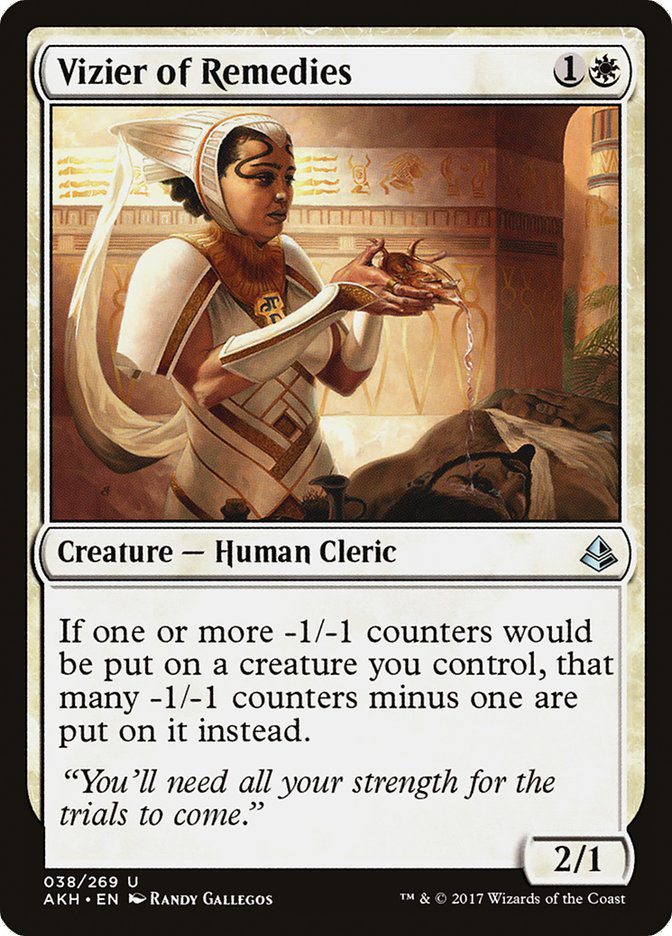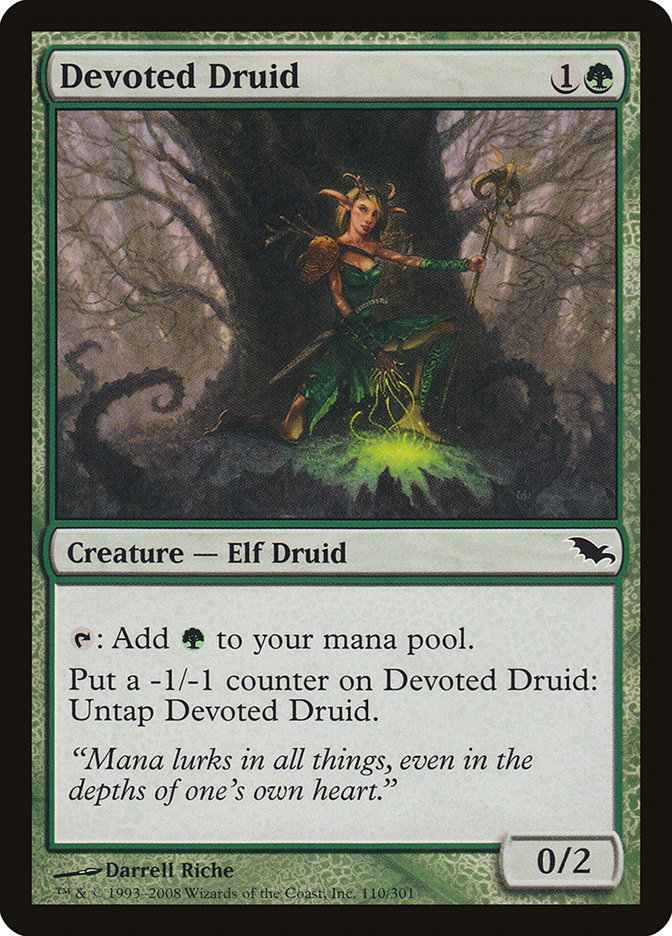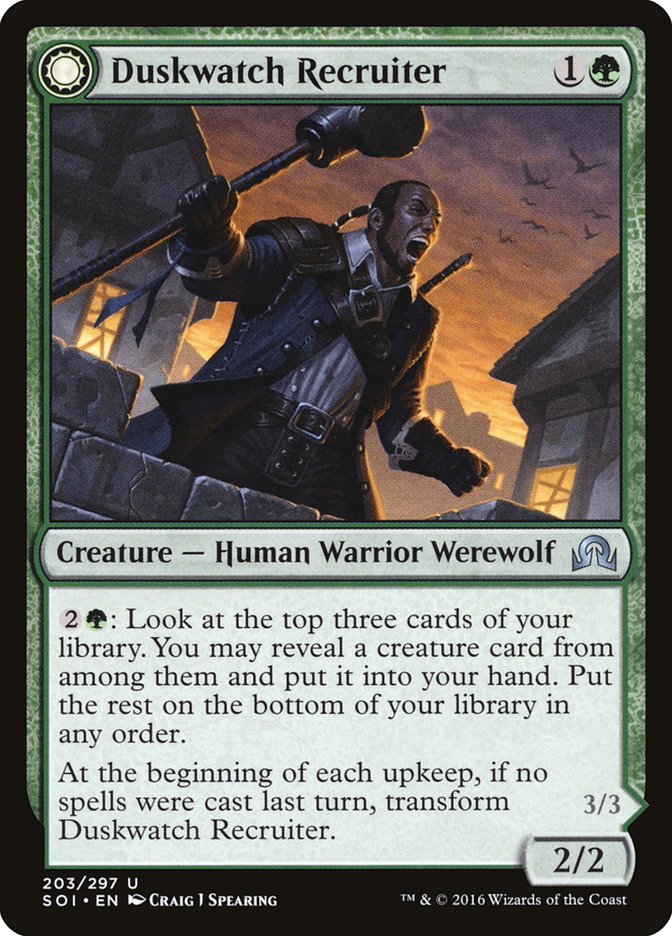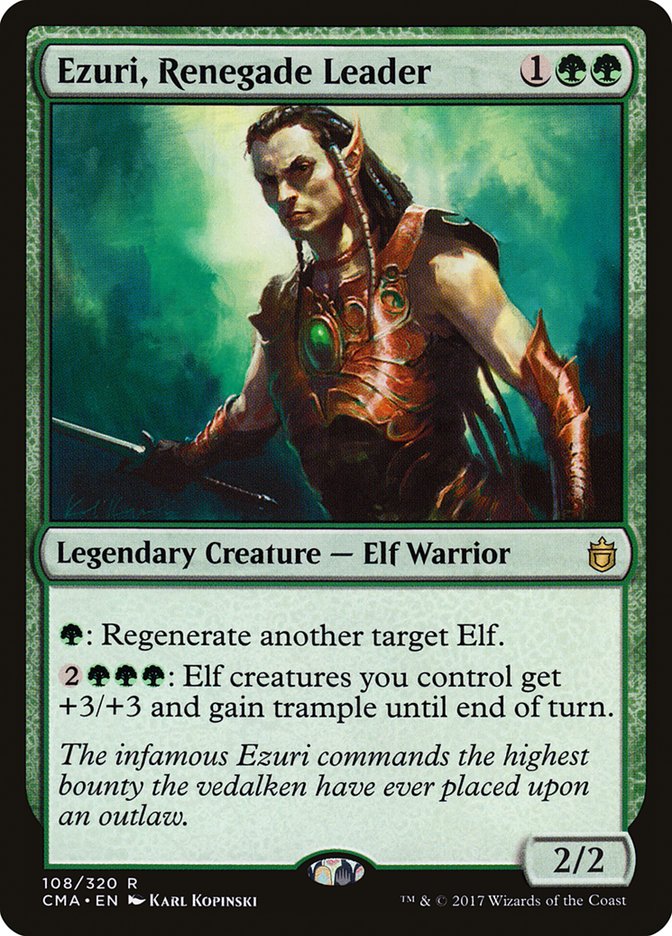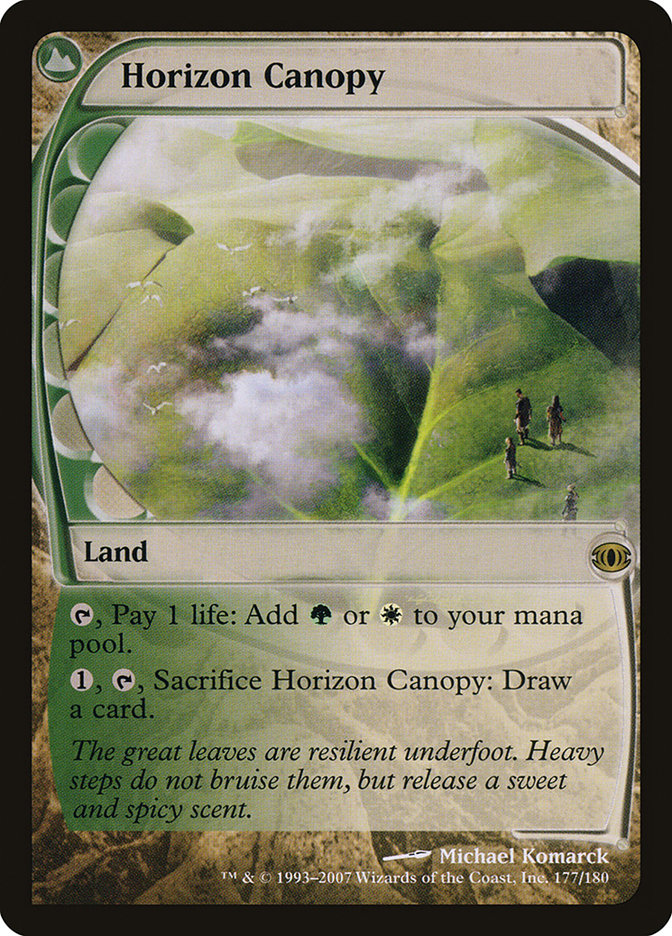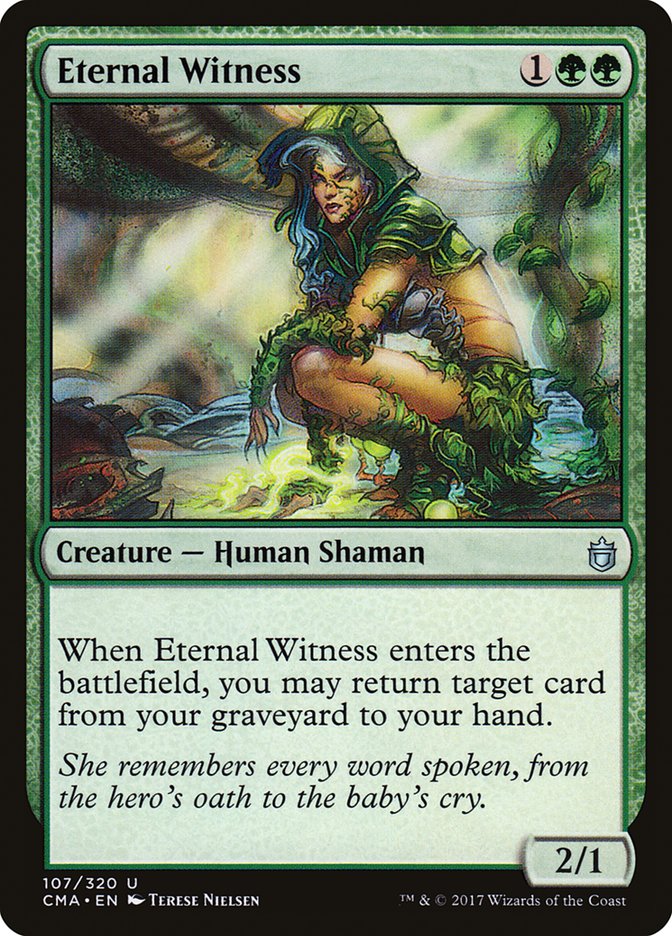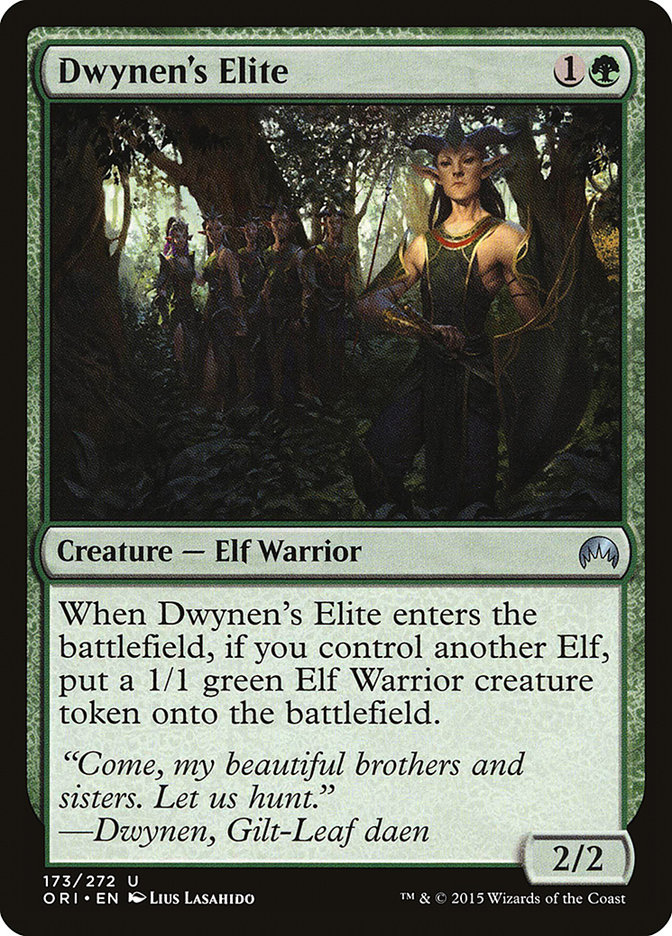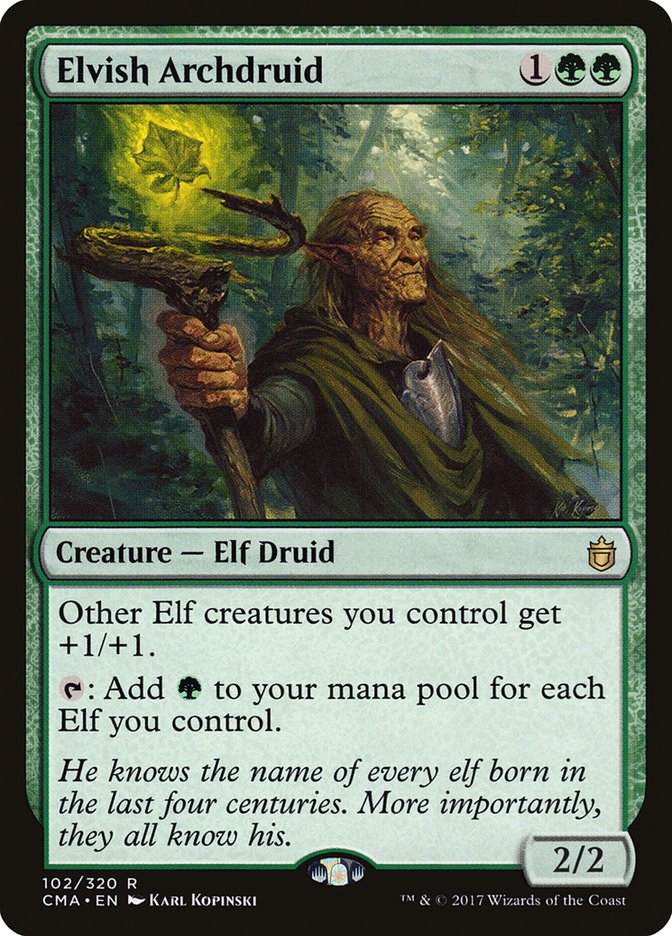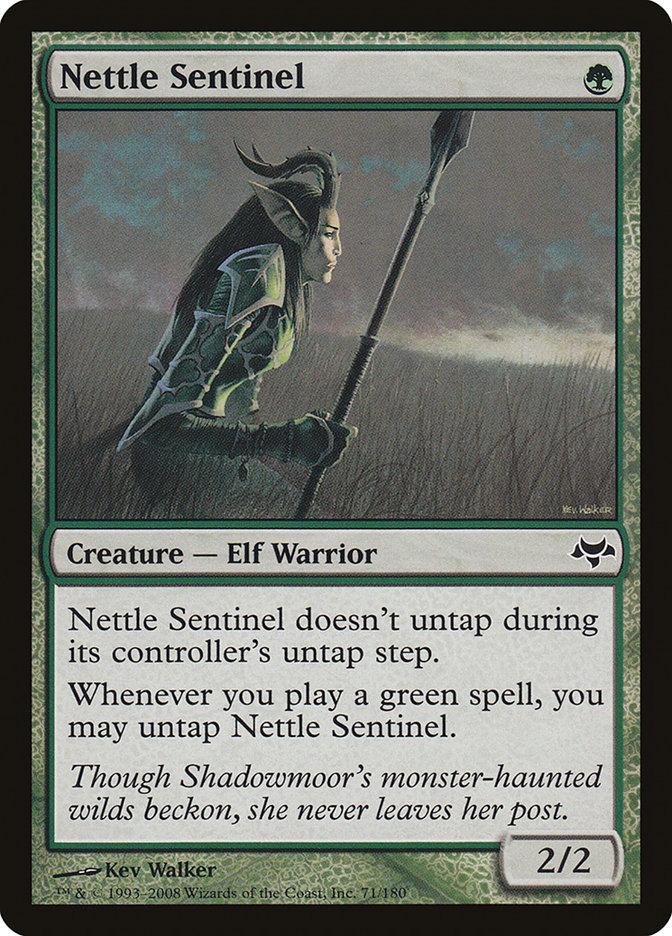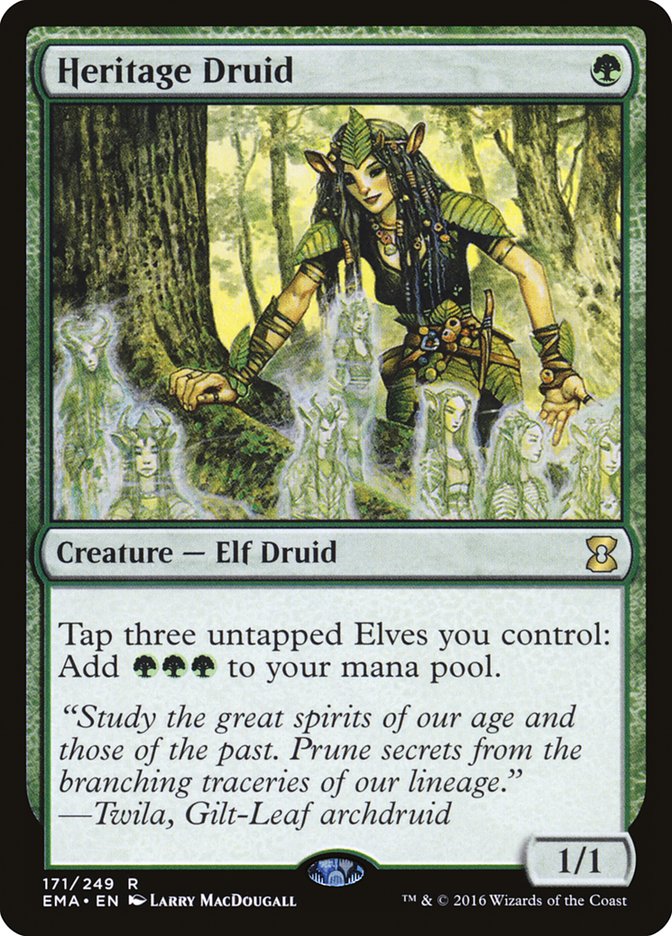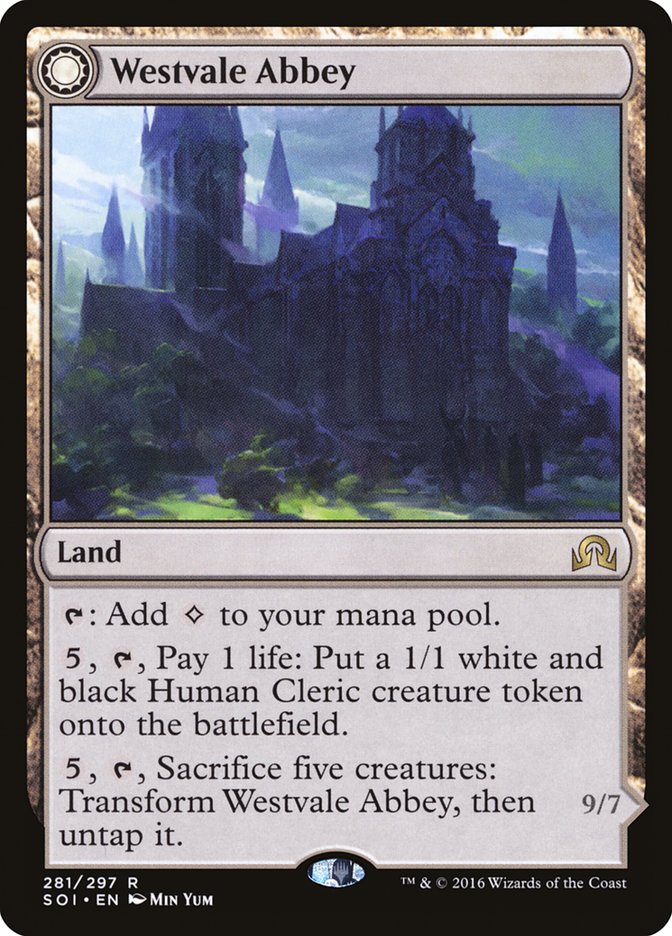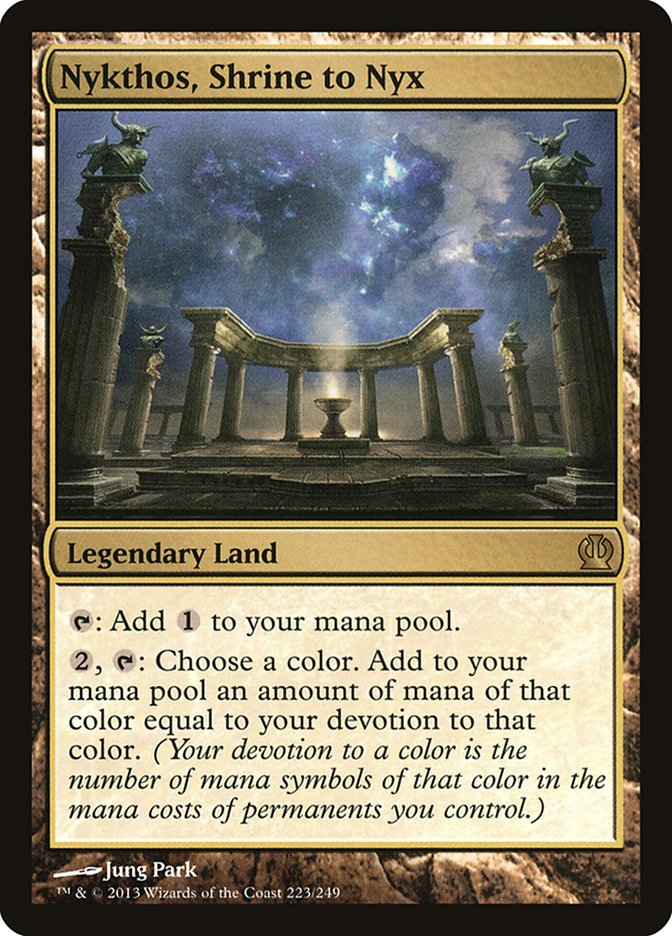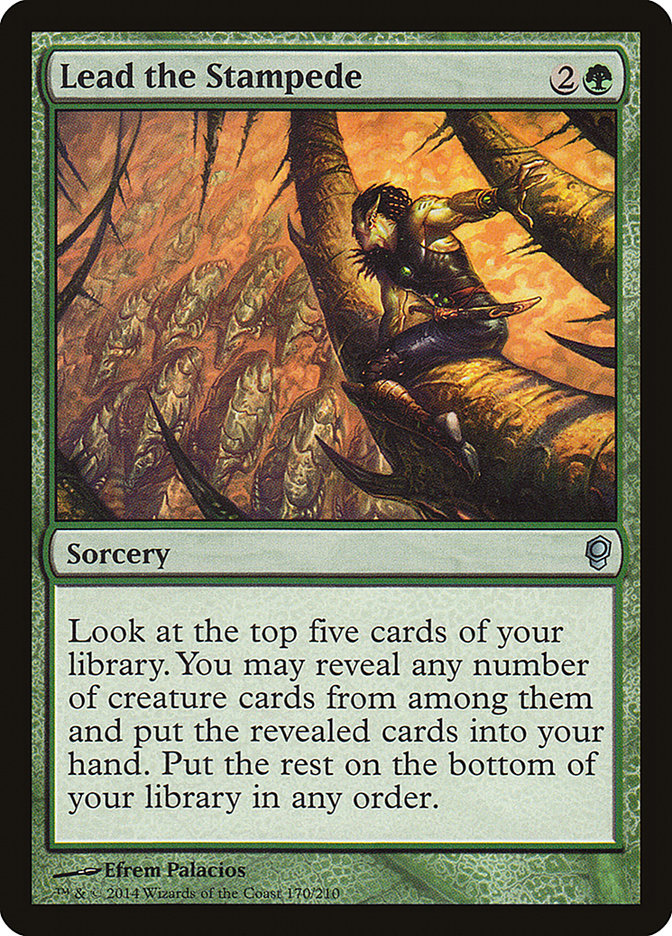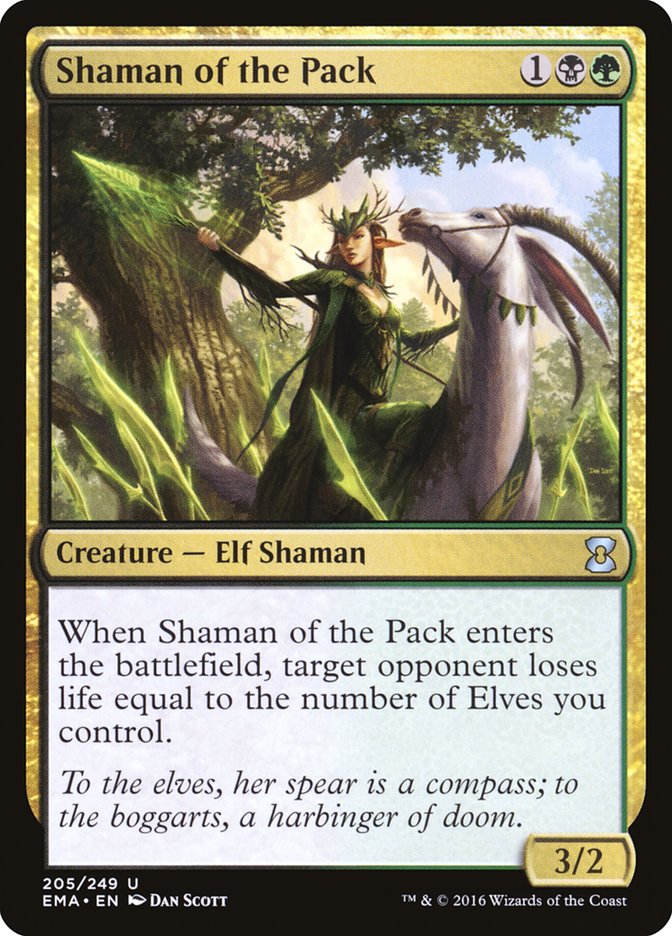When I made the decision to put down Elves in Legacy, I always thought I would move back to it eventually. But as time has passed, my opportunities to play the format have decreased, and the deck has failed to gain any new tools to improve, so the metagame has passed it by to an extent. Add to that the fact that I have a blast playing Storm, and it looks like my days of Craterhoofing people are over, although I’ll never say never.
For someone like me who picks a deck and sticks to it when possible, there comes a certain attachment to the decks I play. Maverick, Elves, and now Storm in Legacy. U/W Delver and Mono-Blue Devotion in Standard. Birthing Pod and Dredge in Modern. As Magic has grown to be a huge part of my identity, these decks occupy small but significant portions of that part. And while Magic is so dynamic that I’m always moving forward, putting down a beloved deck isn’t as simple for me as it may be for other players.
So last week, when I was fretting over whether or not Dredge was potentially well-positioned again now that it’s been a fringe player for the last few Modern events, Todd Anderson managed to tug at my heartstrings by suggesting Elves a potential deck for SCG Richmond. He was suggesting it for himself, of course but I was quickly filled with fond memories of untapping Nettle Sentinel and attacking with hordes of small green creatures.
I had been looking over recent decklists and the decline in graveyard hate still didn’t seem to be happening, as cards like Relic of Progenitus and Rest in Peace are still quite effective against Grixis Death’s Shadow and Storm among other popular decks. So I began thinking about Elves.
Creatures (35)
- 4 Llanowar Elves
- 1 Eternal Witness
- 4 Heritage Druid
- 4 Devoted Druid
- 4 Nettle Sentinel
- 1 Elvish Visionary
- 4 Elvish Archdruid
- 4 Ezuri, Renegade Leader
- 4 Elvish Mystic
- 4 Dwynen's Elite
- 1 Vizier of Remedies
Lands (17)
Spells (8)

Back when I was playing the deck in Legacy, the Modern variant looked entirely unappealing. It lacked all the best cards from the Legacy lists: Gaea’s Cradle, Glimpse of Nature, Natural Order, Green Sun’s Zenith, Wirewood Symbiote, and Quirion Ranger. These are the six best cards in the deck, and as a result, the Modern lists always seemed underpowered in comparison.
In reality, the decks are simply different on a fundamental level. For most of its history, Elves in Modern has been a pure aggressive deck, looking to spew its hand by turn 3 and attack, usually with your small creatures boosted by Elvish Archrduid and Ezuri, Renegade Leader. The aggro plan in Legacy is the backup plan, and while powerful, it never struck me as inherently unfair in the way I like to play Modern.
But that changed with the printing of Vizier of Remedies. Immediately its interaction with Devoted Druid was discovered and put into decks with Collected Company and Chord of Calling, but the dedicated combo lists had to play a lot of weak individual cards like Duskwatch Recruiter and Walking Ballista, making their backup aggro plan rather poor.
Creature-based combo is most powerful when you’re not all-in on the combo part of the deck and can instead use a dual-threat aggro-combo plan to force the opponent to fight a war on multiple fronts, baiting them to use their resources toward the wrong plan for your draw and winning with the other. For that you need a shell that can incorporate the Devoted Druid combo without being beholden to it.
Elves is that shell.
It’s hard to imagine a more perfect home. Devoted Druid is already an Elf and a mana Elf at that. After playing the deck for sixteen rounds, I think there’s a good chance Devoted Druid should’ve been in the deck even before the printing of Vizier of Remedies. Between Chord of Calling (with, which Devoted Druid, plays similarly to Wall of Roots); Ezuri, Renegade Leader; and Collected Company, the Modern Elves deck is quite mana-intensive, and Devoted Druid fuels explosive starts while giving you an easy way to recoup the lost tempo from your Llanowar Elves or Elvish Mystic dying.
So we have a deck where Devoted Druid alone is more than serviceable; it’s actively good. The next step is finding a suitable win condition, and Elves has that already in Ezuri, Renegade Leader. No need for awkward Walking Ballistas that you can’t search for with Chord of Calling or Collected Company, thus necessitating the inclusion of Duskwatch Recruiter. Ezuri as a win condition even gives you another combo if you have it with two Devoted Druids.
As long as you can activate Ezuri once, you have pumped your Devoted Druid’ toughness by three, thus allowing you to generate six mana by repeatedly untapping them. From there you can activate Ezuri again with one mana floating and continue the loop ad infinitum. It’s Kismet, but instead of your opponent’s stuff entering the battlefield tapped, they’re dead.
Because the deck functions well without the combo, you don’t need to overload on Vizier of Remedies; a single copy to tutor for will do, making the combo more space-efficient in this deck than any other.
The result is a full-fledged aggro-combo deck that can win the game as early as turn 3 while also being resilient to disruption. Devoted Druid is a must-kill threat that isn’t critical to your aggro plan, so its death isn’t a significant hurdle to overcome. In fact, it often means that your Elvish Archrduid or Ezuri, Renegade Leader will live, and that’s more than good enough in most situations. That added bit of threat density without pushing the curve too high is very easy to overlook but huge for a deck like this that is trying to tax opposing removal.
Borrowing heavily from Martin Juza’s list from Grand Prix Copenhagen, which I featured in a Daily Digest, I devised the following list:
Creatures (34)
- 4 Llanowar Elves
- 1 Eternal Witness
- 4 Heritage Druid
- 4 Devoted Druid
- 4 Nettle Sentinel
- 4 Elvish Archdruid
- 4 Ezuri, Renegade Leader
- 4 Elvish Mystic
- 4 Dwynen's Elite
- 1 Vizier of Remedies
Lands (18)
Spells (8)

You’ll notice that this list differs slightly from the one I registered, and that is entirely due to my failure to procure Horizon Canopies before the event, which I don’t plan on repeating in the future. Horizon Canopy is a great card in the deck and gives you valuable white sources for the many sideboard cards in the deck. I named Human off Cavern of Souls more times than I’m proud of so I could cast Vizier of Remedies.
For a rundown of my card choices, I’ll direct you to the deck tech I recorded.
I won’t recap them here, merely adding the following:
I chose to play an eclectic mix of hate cards and silver bullets because I like to force my opponent to think about as much as possible and the hate cards are incredibly high in both power and diminishing returns. The second Stony Silence or Rest in Peace most often does nothing, so there’s little reason to risk drawing it. It may be unlikely that I draw any given sideboard card, but there’s enough overall hate for any matchup that you’ll draw one of them often enough to be effective.
The one Eternal Witness is a flex slot that I chose in order to have access to the combo if Vizier of Remedies dies while being a generically good card and great hit off of Collected Company. It was serviceable but certainly not critical and could become an Elvish Visionary or Reclamation Sage among other options.
You Need to Know…
This was my first tournament experience with Modern Elves and as such I learned a lot. Here’s a rundown of the major lessons:
The deck kills on turn 3 and 4 very often. Even with only one Vizier of Remedies, finding the combo is quite easy, as is spewing your hand and overrunning them with Ezuri, Renegade Leader. There aren’t a lot of heavy-disruption decks outside of Death’s Shadow, so I was untouched in a large portion of those wins.
Due to that speed, you need to interact with Elves early and often. Much like in Legacy, it’s hard for your opponent to suss out which Elves are most important, since it depends on your hand, and you need to use that uncertainty to your advantage. That said, the most important Elf to kill is still the turn 1 mana creature.
Reversing this lesson, a turn 1 mana creature is also the most important card to have in your opening hand. I mulliganed nearly every hand without one and slower, more powerful hands rarely played out well. You have the threat density to draw into your heavy hitters later, but if you fall behind to minimal disruption, catching up is difficult.
I mulliganed to five or lower five times in the event and won three of those games. Dwynen’s Elite, Elvish Archdruid, and the combo all let you play effectively from a low base of resources, which I thought would be very difficult going in.
Much like Terminus was the bane of my existence in Legacy, Supreme Verdict was my bane in Modern. Both of my losses in the Swiss were to control decks, one U/W and one Jeskai. I was unable to maneuver into spots where I could cast Collected Company after Verdict resolved and immediately rebuild, and their post-sideboard Dispels were excellent at letting them double spell when I tried to tax their mana to resolve a key Chord or Company.
I was potentially overprepared for Affinity, but the deck had been quite popular in recent weeks and I was more than paid off for that decision, playing the matchup five times without a loss. You don’t Top 8 a 450-person event without some positive variance.
As in Legacy, Nettle Sentinel and Heritage Druid are the worst cards in the deck and those most often trimmed in sideboarding. Chord of Calling is the next most often trimmed, since it’s hard to cast against heavy disruption and vulnerable to commonly played cards like Grafdigger’s Cage and Stubborn Denial.
Don’t be afraid to sideboard out the combo if your opponent is heavy on disruption. It’ll be hard to execute and you’re better off increasing your density of individual threats.
Moving Forward
Taking these lessons into account, here’s the list I’m looking to try next:
Creatures (33)
- 4 Llanowar Elves
- 4 Heritage Druid
- 4 Devoted Druid
- 4 Nettle Sentinel
- 4 Elvish Archdruid
- 4 Ezuri, Renegade Leader
- 4 Elvish Mystic
- 4 Dwynen's Elite
- 1 Vizier of Remedies
Lands (18)
Spells (9)

There isn’t a lot of room to fiddle with the list, but I’ll run down the notable changes:
I played the Westvale Abbey because it was in every list I saw and seemed unnecessary.
It’s a neat angle of attack to have and going to the air can be relevant if, say, your opponent has twenty Young Pyromancer tokens on the battlefield, but I’d like to explore other options for utility lands. Nykthos, Shrine to Nyx is great for enabling Ezuri, Renegade Leader and Chord of Calling, which will ideally let you go through a ground stall.
Lead the Stampede is a nod to the rise of control decks, giving you a great source of card advantage to rebuild from Wrath effects. The other potential card for this spot is Nissa, Voice of Zendikar, which can turn your small creatures into significant threats or make an army by itself that demands an answer.
I’ll end by discussing the other popular list of this deck, which plays black as its secondary color over white for Shaman of the Pack as an additional threat and sideboard cards like Thoughtseize.
Shaman of the Pack is a powerful card, but in addition to not enabling a combo, it suffers from being a three-drop in a deck that already has two excellent threes. Curve here is incredibly important, and any increase leaves you more vulnerable to disruption. Shaman of the Pack doubles down on that issue by diminishing in power when you’re low on resources.
Thoughtseize is an incredibly attractive sideboard card against control and combo decks alike, but white has so many great sideboard options that overall the edge is on white’s side. Combine this with the fact that white enables the fantastic combo portion of the deck and I think at this point the Vizier lists are clearly superior.
Some players have attempted to make Abzan lists work, and I think the mana to do so is available, but it would require cutting some of the utility lands for more fetches and shocks and would therefore be significantly more painful than the current one, which is a significant issue against Burn and Scapeshift decks. I don’t see the increase in power being worthwhile on the balance.
How I’ve Missed You!
It was a bit surreal playing a deck that on one hand was completely new but on the other felt familiar, and I have to admit it was fun to get back into the Elves mindset of switching gameplans, calculating tricky combat math, and overrunning opponents for a bajillion damage. It’s premature to say I’ve found my new Modern deck, of choice, but I certainly hope so, because Elves is just as fun as it’s always been.


